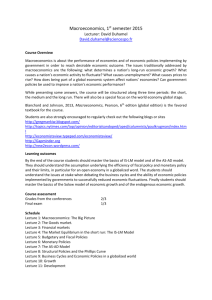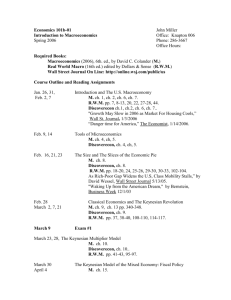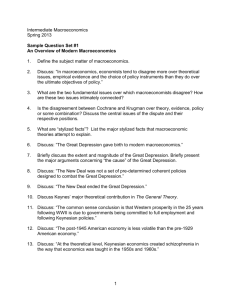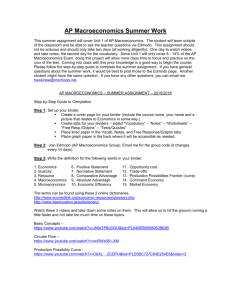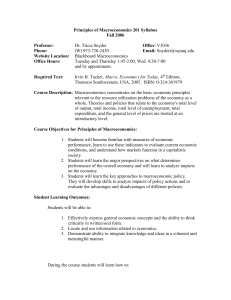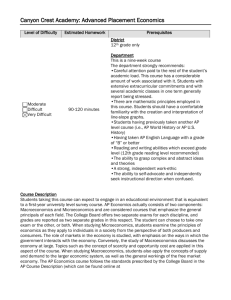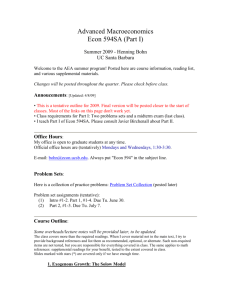Advanced Macroeconomics Lecturer: Prof. Dr. Thomas Beissinger
advertisement
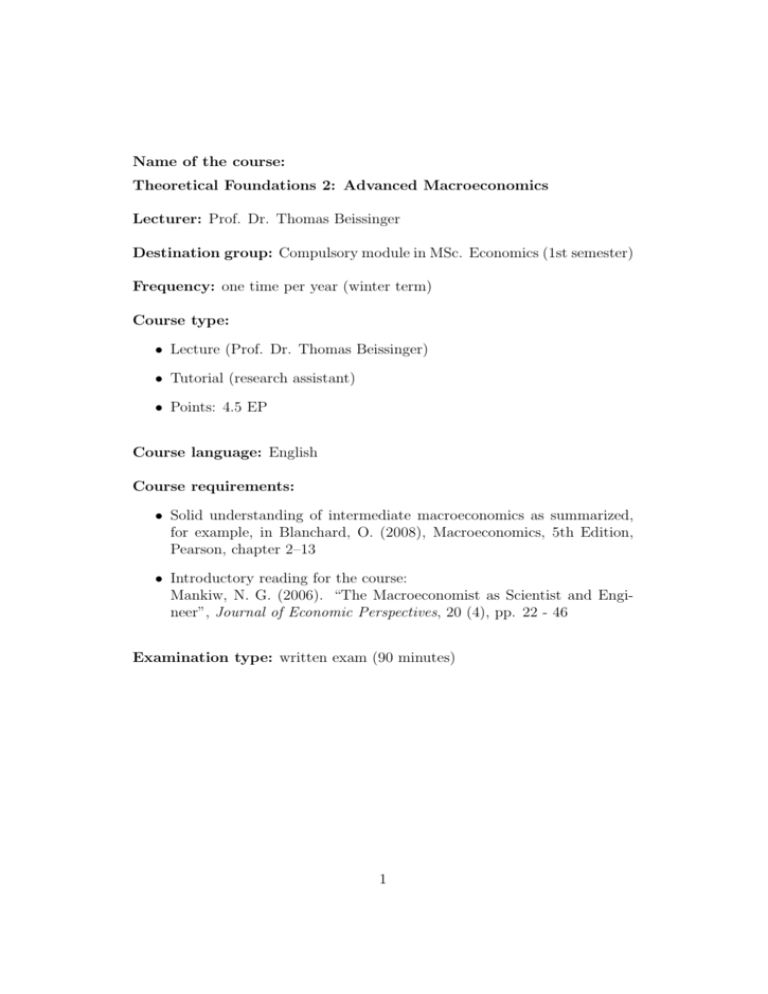
Name of the course: Theoretical Foundations 2: Advanced Macroeconomics Lecturer: Prof. Dr. Thomas Beissinger Destination group: Compulsory module in MSc. Economics (1st semester) Frequency: one time per year (winter term) Course type: • Lecture (Prof. Dr. Thomas Beissinger) • Tutorial (research assistant) • Points: 4.5 EP Course language: English Course requirements: • Solid understanding of intermediate macroeconomics as summarized, for example, in Blanchard, O. (2008), Macroeconomics, 5th Edition, Pearson, chapter 2–13 • Introductory reading for the course: Mankiw, N. G. (2006). “The Macroeconomist as Scientist and Engineer”, Journal of Economic Perspectives, 20 (4), pp. 22 - 46 Examination type: written exam (90 minutes) 1 Outline: Advanced Macroeconomics 1. Introduction: Who is Who in Macroeconomics? 1.1 The Keynesian Revolution 1.2 The Classical Attack 1.3 New Keynesian Economics 1.4 The Current State of Macroeconomics Literature: Blanchard, O.(2009). Macroeconomics, 5th edn. Pearson. Chapter 27 Epilogue: The Story of Macroeconomics 2. Rational Expectations and Economic Policy 2.1 The Rational Expectations Hypothesis (REH): Weak– and Strong– Form Rational Expectations 2.2 REH in a New–Classical Model • The Policy Ineffectiveness Proposition • The Lucas Critique 2.3 REH in a Keynesian Model • Single–Period Nominal Wage Contracts • Two–Period Overlapping Nominal Wage Contracts Literature: Heijdra, B. J. (2009). Foundations of Modern Economics, 2nd edn. Oxford U. Press. Chapter 3 3. The Government Budget Deficit 3.1 The Ricardian Equivalence Theorem: a Simple Example 3.2 Some Objections to Ricardian Equivalence: • • • • Distorting Taxes Borrowing Restrictions Finite Lives and Overlapping Generations Informational Problems 3.3 The Theory of Government Debt Creation 2 Literature: Heijdra, B. J. (2009). Foundations of Modern Economics, 2nd edn. Oxford University Press. Chapter 5 4. The Solow Growth Model 4.1 Stylized Facts 4.2 The Basic Structure of the Solow Model 4.3 The Solow Model in Discrete Time 4.4 Transitional Dynamics in the Discrete Time Solow Model 4.5 The Solow Model in Continuous Time Literature: Acemoglu, D. (2009) Introduction to Modern Economic Growth. Princeton University Press. Chapter 1, Chapter 2 (pp. 26–48) Romer, D. (2006) Advanced Macroeconomics, 3rd edn. McGraw–Hill. Chapter 1 5. The Ramsey Model 5.1 Assumptions of the Model 5.2 The Behavior of Household and Firms 5.3 The Dynamics of the Economy 5.4 Welfare 5.5 The Balanced Growth Path 5.6 The Effects of Government Purchases Literature: Romer, D. (2006) Advanced Macroeconomics, 3rd edn. McGraw–Hill. Chapter 2, Part A 6. The Diamond Overlapping–Generations Model 6.1 Assumptions of the Model 6.2 Household Behavior 6.3 The Dynamics of the Economy 6.4 The Possibility of Dynamic Inefficiency Literature: Romer, D. (2006) Advanced Macroeconomics, 3rd edn. McGraw–Hill. Chapter 2, Part B 3


